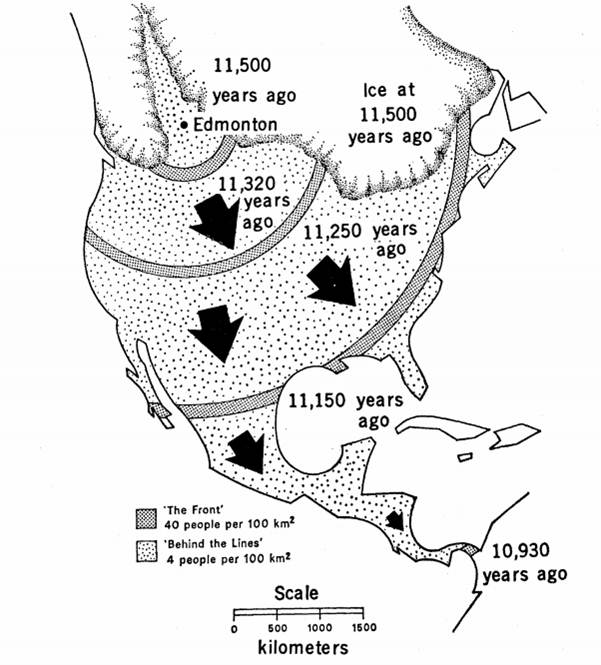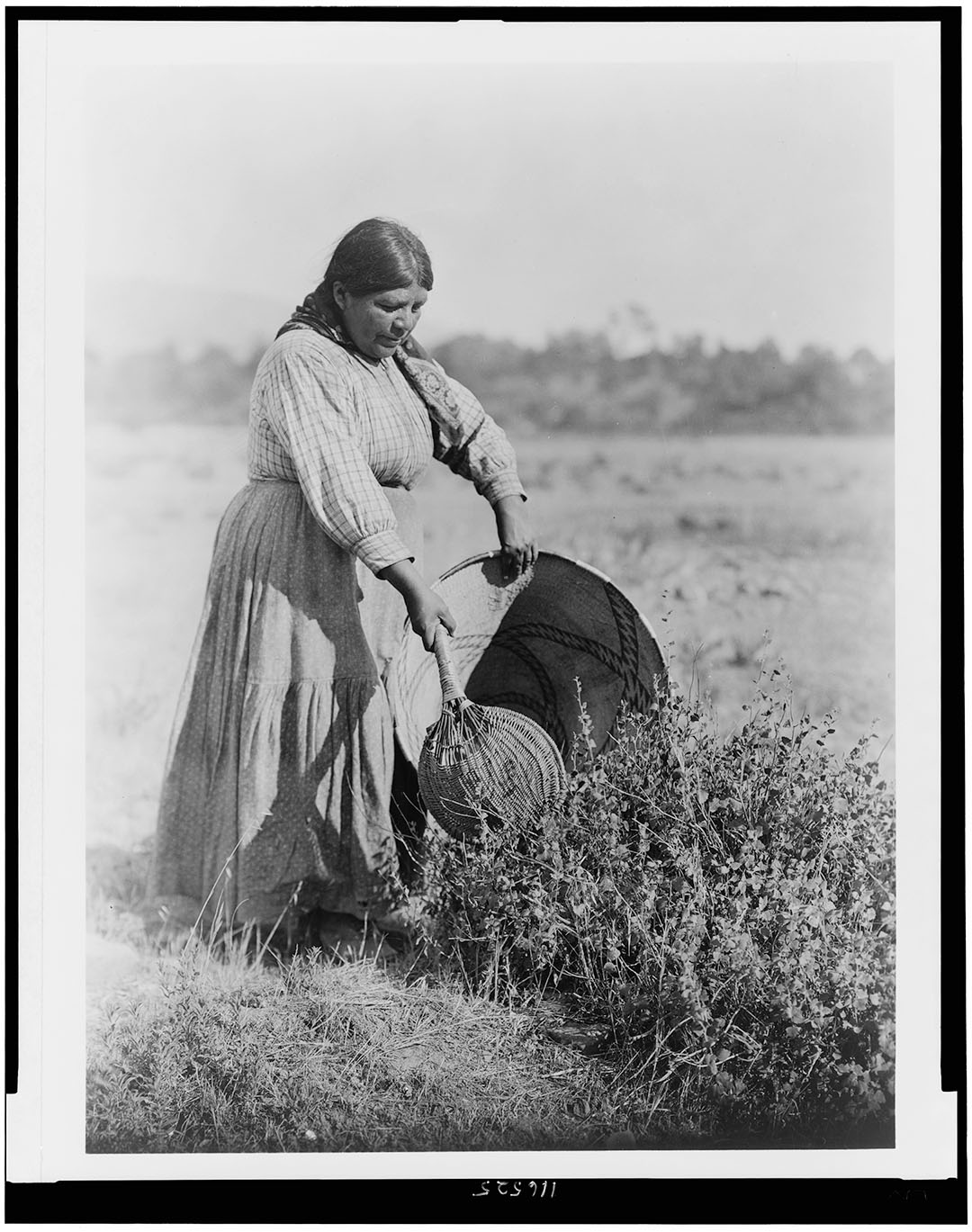History:
to ~10,000 BC
The last ~10,000 years, before European colonization, is termed the era of Aboriginal Prehistory. The first Americans may have swept the Western Hemisphere and decimated its fauna within 1,000 years.

Loss of Megafauna
The extinction of most of the North American megafauna coincided with the arrival of humans during the late Pleistocene, 12,000 to 11,000 years BP. There is an ongoing debate about the causes of this major extinction event, which included many smaller mammals as well. There are four main ideas concerning the loss of megafauna. The first is that early humans hunted them to extinction, often called the “Pleistocene overkill” hypothesis. The second major hypothesis is that the extinctions were a result of climate shifts during the last Ice Age. The third is that a virulent “hyperdisease” brought to North America with the first humans and their dogs swept through and devastated populations. The fourth is an extraterrestrial impact from a comet possibly exploded in the atmosphere (explaining why no crater remains).
Scientist are now investigating the stories of individual regions and species to unearth the events that led to the North American extinction event (Grayson 2008; Jones, et al. 2008). It may be that a combination of environmental disturbance, stemming from the arrival of humans and climatic changes, interacted with hunting, disease, and with the unique life history traits of the animals themselves to contribute to the extinction of 35 genera of North American large mammals. However, of the 35 large mammals that went extinct in North America, 29 became globally extinct at the same time indicating that a large synchronous event occurred between 12,000 to 11,000 years BP to wipe out the world’s megafauna (Faith and Surovell 2009).
- The “overkill’ idea that predation by humans caused the extinction of large terrestrial animals was first proposed by P.S. Martin in 1967.
- Others report that the overkill hypothesis is not sufficient in that there is no evidence that all of the animals that went extinct were hunted by humans (Grayson and Metlzer 2002).
- Changes in climatic conditions during the Holocene may be another explanation. Shifts in grassland composition from higher in protein plants (C3 photosynthetic pathway) to less digestible grasses (C4 photosynthetic pathway) resulted in a decline in body size of bison in the Great Plains (Hill, et al. 2008).
- Landscape changes during the Pleistocene were at least partially responsible for the Pleistocene extinctions in that the landscape could no longer support the large diversity of animals (Lambert and Holling 1998).
- Stromberg et al. (2007:257), referring to Greenlee and Langenheim (1990), suggest that the increased fire frequency in grasslands associated with the arrival of humans 11,000 BP caused the landscape scale change in vegetation that contributed to megafaunal loss in California.
Anthropogenic Fire
The use of fire has been documented for the California Tribes that occupied coastal prairie (Heady, et al. 1977).
- California coastal grasslands were burned every 1-3 years by Native Americans to increase harvests of grains, tubers, and bulbs (NPS Point Reyes National Seashore).
- Native American burning impacts on California shrubland dominated landscapes are evaluated relative to the natural lightning fire potential for affecting landscape patterns. Location focus was on the coastal ranges of central and southern California (Keeley JE. 2002).
- In California, native peoples had at least 70 different reasons for firing the vegetation (Lewis 1973, Timbrook et al. 1982).
- Historical literature descriptions and phytolith studies (literally “plant stone”, phytoliths are tiny structural bodies inside the cells and cell walls of plants) indicate that California tribes maintained and increased the extent of coastal prairie and grassland habitat in relation to coastal scrub, chaparral, and forest, from southern California to Oregon through their burning practices (Bicknell 1992; Bicknell, et al. 1993a; Bicknell, et al. 1993b; Bicknell, et al. 1993c; Raven and Axelrod 1995; Stewart 1951).
- Prairies on the Olympic Peninsula in Washington State were burned regularly by Native Tribes (Anderson and Wray 2003).
Seeds can survive grassland fires because the fires are fast burning and relatively cool (Howard 1998).

Human Agro-tending: California Native American Uses and Practice
Although Native Californians did not domesticate crops they developed an intimate knowledge of native plants and “cultivated” grasslands using a variety of management techniques to increase food and material resources (Anderson 2007).
Heizer and Elasser (1980) estimated that California’s native people utilized over 500 species of plants and wild animals for food. Species lists in ethnological studies show that may of the plants utilized were from coastal prairies (Bocek 1984; Chesnut 1902; Goodrich, et al. 1980; Moerman 2003; Stodder 1986).
Although there are no detailed written accounts observing past Native American management of coastal prairies (Ford and Hayes 2007), Native Americans, ethnoecologists, restoration ecologists and others are working to document and reconstruct plant management practices (Anderson 2005; Anderson 2007; Lawson and Lawson 1976; Peri 1985; Peri and Patterson 1976).
- The Coast Miwok at Point Reyes harvested fresh greens, seeds and bulbs from Coastal Prairie grasslands (NPS Point Reyes National Seashore).
- Iris douglasiana leaves contain two fine silk-like fibers valued for their strength and flexibility. The fibers were used to make ropes, cords, nets, and in basketry (Stephens, M. 2000).
- For more plant uses, see the individual species accounts in the Prairie Described section of this website.